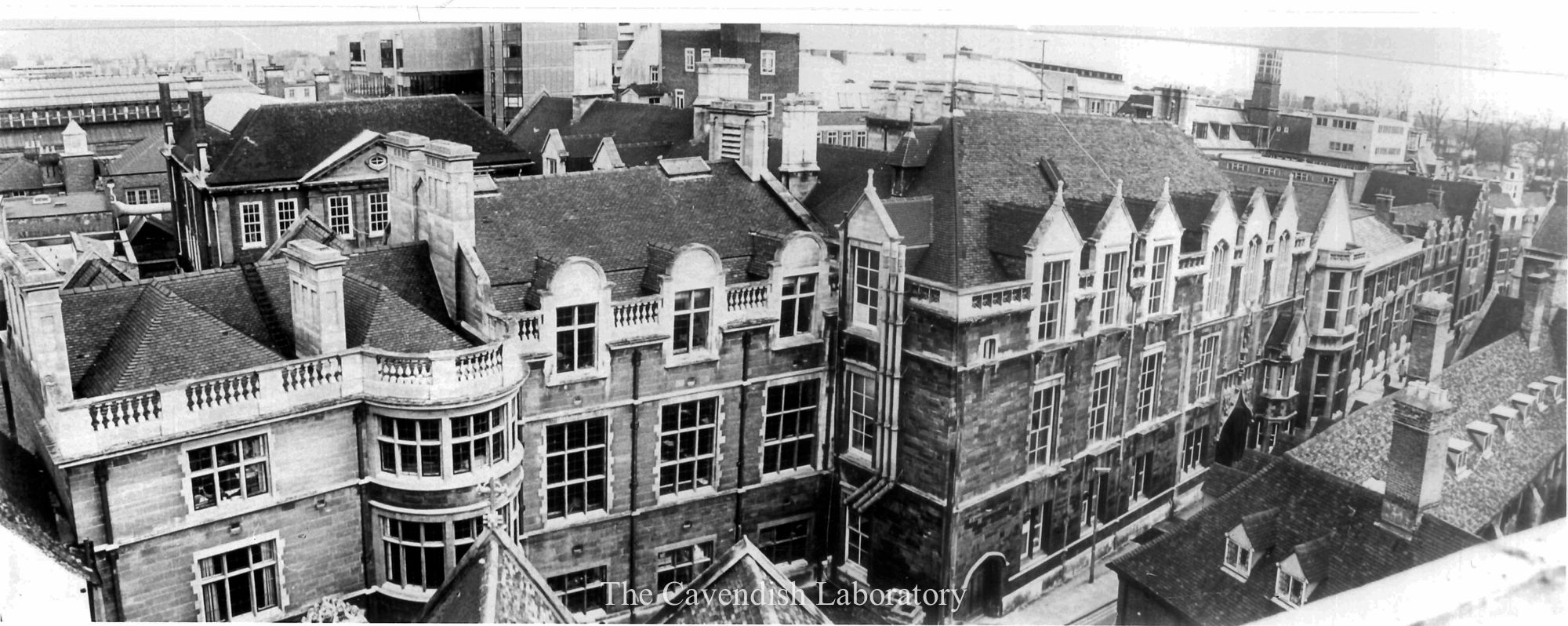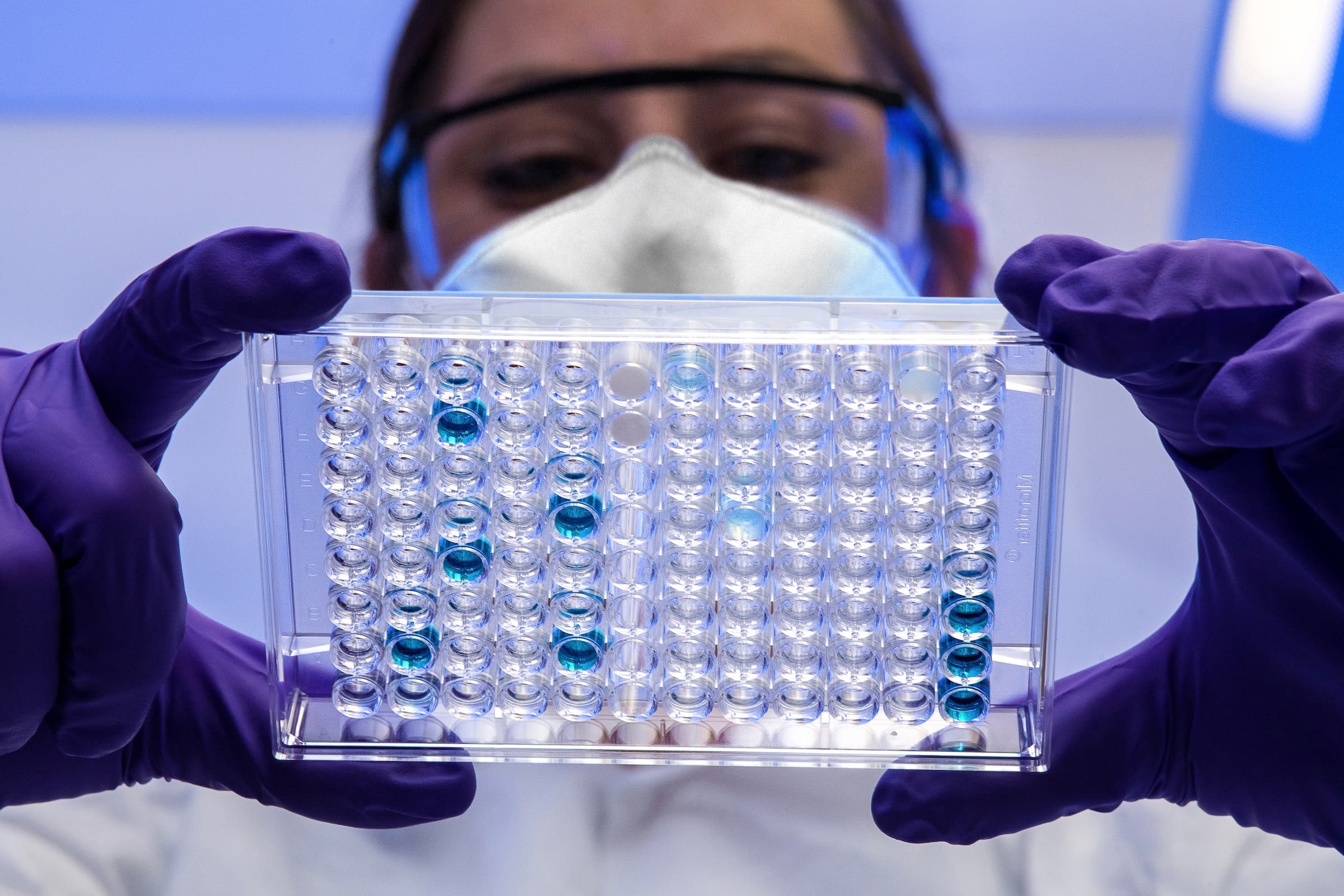Discovering the 'secret of life'
70th anniversary of DNA double helix breakthrough

Francis Crick’s announcement to patrons of The Eagle pub that he and James Watson had "discovered the secret of life", the evening after their determination of the structure of the DNA molecule, has become a part of Cambridge folklore.
Their breakthrough – pinpointing how our genetic code is passed from parent to child - has led to world-changing advances in many fields, not least in biological research and our understanding and treatment of inherited diseases. But the discovery, which was made at Cambridge’s Cavendish Laboratory 70 years ago, was only possible because of the work of a host of talented scientists, not least X-ray crystallographer Rosalind Franklin.
Lawrence Bragg’s appointment as Cavendish Professor of Physics in 1938 – succeeding Ernest Rutherford – was also key. Along with his father William, Bragg had already won a Nobel Prize in 1915, after discovering that X-rays could be used to determine the positions of atoms within a crystal.
"Bragg was a hugely important figure in this," said Professor Malcolm Longair, Director of Development at the Cavendish Laboratory.
"When he became Cavendish professor it was quite a shock to the community here, because he was a crystallographer rather than a nuclear physicist, which the laboratory was famous for. He encouraged the X-ray crystallography of biological substances as soon as he came to Cambridge."
Bragg's interest was bolstered by the remarkable X-ray crystallography data on haemoglobin, obtained by Max Perutz.
Following the Second World War, Bragg continued to support crystallography at Cambridge, encouraging Perutz and John Kendrew in their efforts to determine the structure of haemoglobin and myoglobin. Also working in X-ray crystallography at the time, and one of very few women at the Cavendish Laboratory, was June Broomhead. Her work measuring the dimensions of adenine and thymine molecules would be crucial to cracking the mystery of DNA’s structure, as would her colleague Bill Cochran’s theoretical research that explained the detailed images produced by a single helix.
"These are the people, and there are others besides, who formed the core of this experimental work," said Prof Longair. "They were all contributing very significantly to how you analyse the data.
"A significant point is that Watson and Crick were both theorists, they didn’t do any of the experiments that resulted in the X-ray crystallography images, which they set about interpreting. There were lots of people who contributed to the knowledge of the size of the molecules that had to be fitted together, as they eventually were. They were working in one of the best places they could be to study the crystallographic work."

There was a surge in interest in what X-rays of biological samples might uncover, and at the same time a strong personal competition between Bragg and Linus Pauling, professor of chemistry at Caltech. So when Bragg learned Pauling was getting very close to the structure of the DNA molecule he gave free rein to Crick and Watson to pursue their own work on DNA.
They benefited from the work of X-ray crystallographers Maurice Wilkins and Rosalind Franklin at King’s College London, using Franklin’s images, essentially without her knowledge.
"All the data was coming from other people," said Prof Longair. "Franklin was a brilliant experimenter – she produced better X-ray images of the diffraction patterns of the DNA molecules in the crystalline and non-crystalline state than anyone else."
Crick and Watson took these data and moved the research forward.
Prof Longair said their talent was undeniable. "They were very bright people. They would interpret the findings of the crystallographers, which is itself a great skill, to work out these patterns and convert them into an image of the molecular structure.
"They used all the structural information and with a great piece of good luck, they found that if you put together the two bases of the four molecules, then you found they matched. And then you see that this is what holds together the two helixes – a pair of helixes interacting with each other and held together by these pairs of bases. And the order in which the base pairs appear gives you the genetic code."
Physicist Professor Dame Athene Donald, Master of Churchill College, where Rosalind Franklin’s papers are archived, said the story of the discovery still captures the imagination, but that the narrative has changed for a new generation of physicists.
"The crucial role of Rosalind Franklin and others is understood now, and I think that aspect of the story has far more currency than it did 25 years ago, with buildings and prizes now named in her honour. And I think that is maybe what people take away now as much as the science, the way women in the field were regarded back then.
"The importance of the discovery is taken as read, and everything else that has followed on from it, such as personalised medicine etc. But I think because we now know the full story, the narrative is perhaps more current than it used to be."

After the discovery, work on molecular biology grew exponentially at Cambridge, eventually leading to the creation of the MRC Laboratory of Molecular Biology at the Cambridge Biomedical Campus.
"The Cavendish Laboratory was already jam-packed with people," said Prof Longair. "Any University building that became available in Cambridge, the Physics department just grabbed! The whole thing just grew and grew, and it was success story after success story.
"It’s incredible when you think that up to then, all of the X-ray crystallography at Cambridge was being carried out in a tiny temporary hut, which was only demolished a couple of years ago."
Prof Longair said that for students today, 70 years after the DNA breakthrough, the work of these scientists is still inspiring.
"I don’t teach the DNA story because it is really an application of the fundamentals I’m trying to teach them. In teaching physics, we have a huge amount of technical stuff to get through to them, but as soon as you do talk about the great discoveries, they light up and they say 'I want to be a part of that'. The challenge is to combine the mathematics and the experimental genius – the hands-on stuff, the 'real physics' - through their own experience, and transfer the technical ability through their project work. And that’s the bit they really love."
The text in this work is licensed under a Creative Commons Attribution 4.0 International License.
